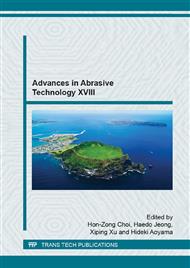[1]
T. Zhang, Up-to-date technology for precision machining of aircraft skin thickness – greenhouse machining technology for the CNC milling instead of chemical milling, Trainer 4 (2011) 25-29.
Google Scholar
[2]
S. Herranz, F. J. Campa, et al., The milling of airframe components with low rigidity: a general approach to avoid static and dynamic problems, P. I. Mech. Eng. B. - J. Eng. 219 (2005) 789-801.
DOI: 10.1243/095440505x32742
Google Scholar
[3]
Z. Zhang, X. Xu, MMS: The latest green skin machining system, Aeronaut. Manuf. Technol. 19 (2010) 84-86.
Google Scholar
[4]
D. Lu, New generation green machining technology for aircraft skin, Aeronaut. Manuf. Technol. 16 (2010) 102-103.
Google Scholar
[5]
M. Xu, B. Xiang, et al., Application of mirror milling system and advanced machining technology for aircraft skin, Manuf. Technol. Mach. Tool 11 (2014) 40-43.
Google Scholar
[6]
Y. Altintas, Manufacturing Automation – Metal cutting mechanics, machine tool vibrations, and CNC design, Cambridge University Press, London, (2000).
DOI: 10.1017/cbo9780511843723
Google Scholar
[7]
K. Nakayama, M. Arai and K. Takei, Semi-empirical equations for three components of resultant cutting force, Ann. CIRP 32 (1983) 33-35.
DOI: 10.1016/s0007-8506(07)63356-3
Google Scholar
[8]
C. A. Brown, A practical method for estimating machining forces from tool-chip contact area, Ann. CIRP 32 (1983) 91-93.
DOI: 10.1016/s0007-8506(07)63368-x
Google Scholar
[9]
P. L. B. Oxley, Mechanics of Machining, Ellis Horwood, Chichester, (1989).
Google Scholar
[10]
X. Jin, Y. Altintas, Slip-line field model of micro-cutting process with round tool edge effect, J. Mater. Process. Tech. 211 (2011) 339-355.
DOI: 10.1016/j.jmatprotec.2010.10.006
Google Scholar
[11]
E. Budak, Y. Altintas and E. J. A. Armarego, Prediction of milling force coefficients from orthogonal cutting data, Trans. ASME J. Manuf. Sci. Eng. 118 (1996) 216-224.
DOI: 10.1115/1.2831014
Google Scholar
[12]
P. Lee, Y. Altinas, Prediction of ball-end milling forces from orthogonal cutting data, Int. J. Mach. Tool. Manuf. 36 (1996) 1059-1072.
DOI: 10.1016/0890-6955(95)00081-x
Google Scholar
[13]
M. Movahhedy, M. S. Gadala, et al., Simulation of the orthogonal metal cutting process using an arbitrary Lagrangian-Eulerian finite-element method, J. Mater. Process. Tech. 103 (2000) 267-275.
DOI: 10.1016/s0924-0136(00)00480-5
Google Scholar
[14]
J. Limido, C. Espinosa, et al., SPH method applied to high speed cutting modelling, Int. J. Mech. Sci. 49 (2007) 898-908.
DOI: 10.1016/j.ijmecsci.2006.11.005
Google Scholar
[15]
J. Yao, D. Li, et al., Finite Element Analysis Method and Simulation System for Flexible Skin NC Trimming over a Reconfigurable Fixture, China Mech. Eng. 23 (2012) 1701-1711.
Google Scholar
[16]
S. Smith, J. Tlusty, An overview of modeling and simulation of the milling process, Trans. ASME J. Eng. Ind. 113 (1991) 169-175.
Google Scholar


